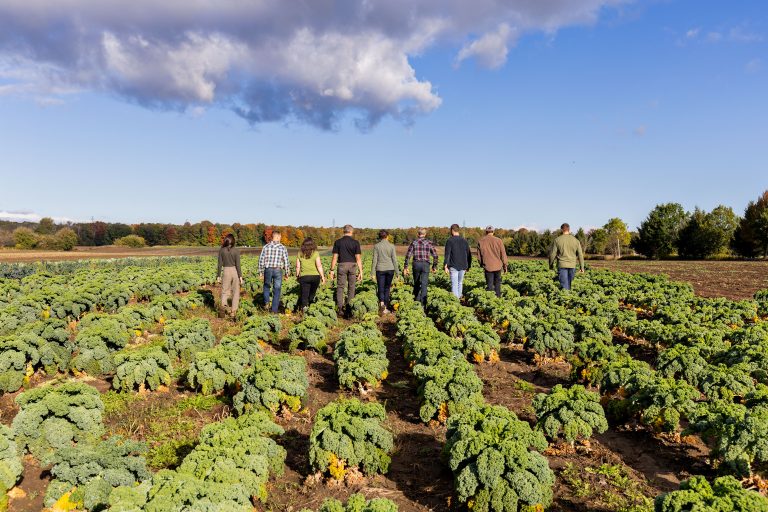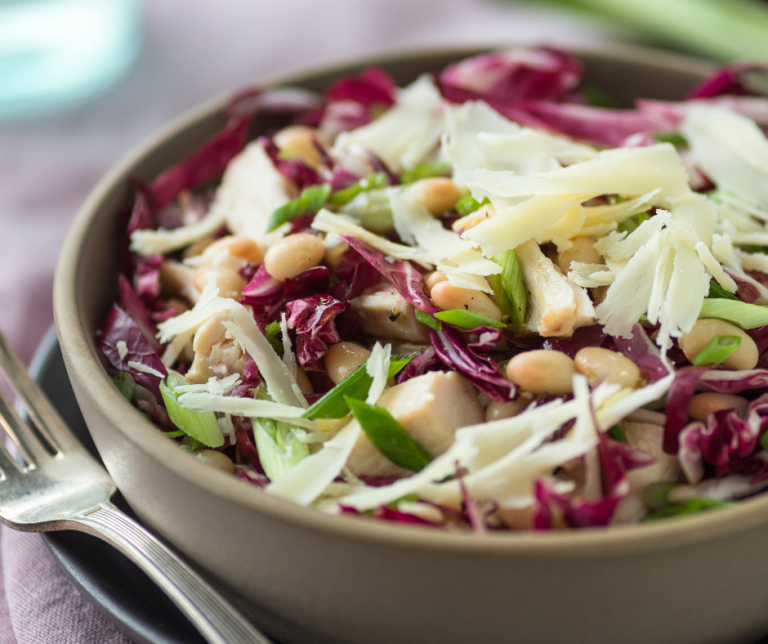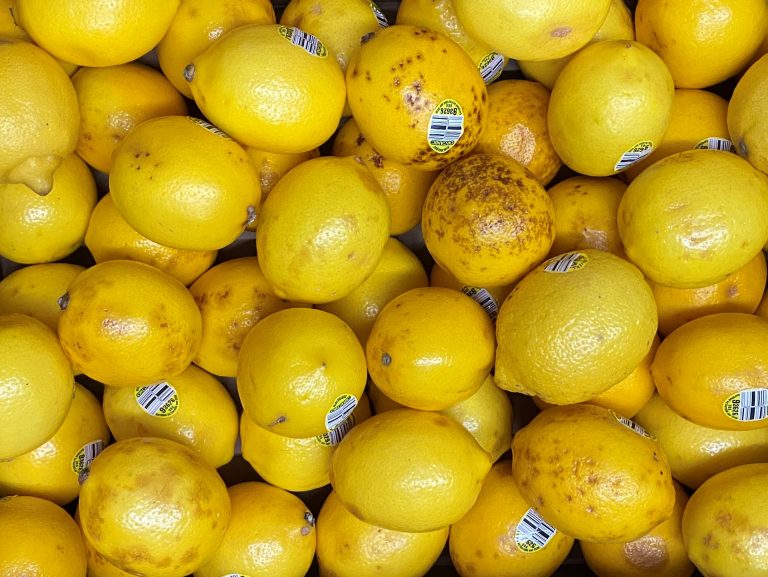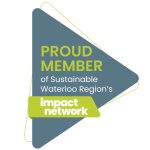In honor of Organic Week, we wanted to dedicate this week’s True Cost Tuesday blog to exploring how you can support organic agriculture with your buying power, no matter how big or small it may be. The past few weeks have been dedicated to tackling some of the foundational benefits and values of organic and sustainable food systems; whether it be health benefits, a focus on the environment, or other ethical topics such as worker rights. However, the current reality is that purchasing organic can be very difficult, especially when people have limited financial resources after dealing with the cost of living (rent, bills, childcare etc.). It can be easy for one to preach the benefits of organic and vouch for people to support such systems, but when buying organic alternatives to your regular shopping list can mean spending nearly 50% more, then it becomes difficult to justify no matter what is said.
The aim of this post is to highlight some ways in which you can support organic food systems while remaining within your means as much as possible. Before diving in it is important to lay out what this post is NOT intended to do. Firstly, we do not intend to moralize or shame anyone for living within their means. If you cannot afford organic food, then it is not be seen as a failure… rather, it is the failure of greater systemic issues that force people to choose between sustainable systems and affording the necessities of life (rent, bills, food etc.). Second, this article is not designed to give tips on how to replace your regular grocery list with organic goods for less at your local superstore. Looking to replace your standard grocery list with one-to-one organic alternatives will simply be more expensive than buying conventionally produced foods (barring some specific examples). Instead, we wish to highlight ways in which you can alter your buying habits and grocery lists in order to shrink the gap in price between organic and conventional foods.
Organic food has the unfortunate reality of often being treated as a commodity, rather than an alternative to convention food. Despite the best intentions of organic foods in theory, the demands of the food market to reduce costs of production and raise prices for the customer have created a system in which the certification of organic foods can often seem like a gimmick to sell the same product for higher prices. This does not only do harm to farmers who genuinely need to sell at higher prices to offset more expensive productions, but it also does harm to consumers who have to choose whether or not buying organic fruits and vegetables is worth skipping out on other staples. In reality this only serves to paint organic in the eyes of many not as a sustainable alternative to conventional farming, but as a form of elitism and classism.
However the truth is that supporting organic food systems doesn’t need to be gatekept behind inflated price tags. While there are ways to reduce the gap between organic and conventional foods, it requires some fundamental changes to the way we shop and consume food, as well as a few concessions made both in favor of organic and your wallet. We intend to outline three key strategies and why they work, and in turn give you the tools necessary to buy with your consciousness.
The first of these strategies is the simplest, yet perhaps the most important: buy locally and buy seasonally. Purchasing seasonal foods (things that are grown/harvested at certain times of the year) from local businesses is a crucial step in mitigating the cost of organic, whether it be the price tag at the market or the unseen costs incurred to get said food to your plate. Local and seasonal food, particularly produce, is often the cheapest of organic options when choosing which goods to buy. This is not guaranteed universally, as local businesses will price their goods however they need in order to cover their own costs and make a profit, but rarely will a smaller local farm price their goods in such a way as to make it unaffordable for their customers. Buying seasonally will also reduce the cost of your groceries, as you will eliminate the expense of fruit or delicate vegetables during the winter months. Importing food from outside your local area (especially the aforementioned fruits and vegetables during the winter) means added expenses to these goods, creating another cost that must be accounted for when sellers decide the final price of those organic apples. To help reduce the cost of organic, doing a bit of research into what is available locally in season and where to buy it will go a long way, whether it be at a local farmers market or through your wholesale supplier. Look into where your food is grown, and choose the option that is closest to your town, province, or country.
While it can be a viable strategy to pick and choose what produce to buy organically or conventionally, the need to make concessions goes both ways. Budgeting for organic food means you will inevitably have to change your eating habits, particularly around animal products such as meat and dairy. These foods incur greater cost than conventional options, even more so than produce thanks to the added stages that go into farming animals. Not only are organic animals required to be fed organic and non-GMO feed, but are also prohibited from receiving growth hormones, antibiotics, and must have access to outdoor spaces. Since organic meats and dairy can take up huge parts of your budget, it might be wise for you to cut down on the use of animal products in your eating habits, and in turn eliminate a huge cost in your food budget. While this does not mean one needs to switch to strictly vegetarian or vegan diets, it does mean you’ll have to be a bit more creative with your produce; making vegetables, grains, and legumes (beans, lentils etc.) the stars of your cooking. Less reliance on animal products might make your cooking more difficult at first, but it is by no means impossible or less fulfilling to eat a diet with less meat and dairy.
Even when concessions need to be made in order to fit your budget, you can still prioritize which organic produce to buy. For instance, if you are looking to avoid pesticide residue for you can purchase organic foods that would be susceptible to heavy pesticide use in conventional agriculture, while skipping out on buying organic foods that are less prone to these methods (though you should try to buy these products organically whenever you can). If you’re looking for a list of produce to add to your cart or outright avoid, you can turn to the Clean Fifteen (produce that generally has the least amount of chemical residue) and the Dirty Dozen (produce shown to have the most chemical residue). By actively investigating the impacts of certain foods, you can easily set yourself up to maximize the power of your dollar by supporting organic systems that have the greatest benefits.
For the time being, organic foods are considered premium goods that often incur greater prices for those who wish to buy them; at least in conventional buying places such as superstores. The food system as it exists today is simply not designed to reward producers for following the set of moral and ethical guidelines organic agriculture promotes (at least for the sake of those ethics alone), and until that system is radically changed organic foods simply cannot compete at the same price range as conventional foods… whether it be due to increased production costs or inflating market prices. While this truth can be disheartening, it need not be the death blow to what is ultimately a system that still has much to provide us in the coming future. Buying organic when you can is one of the best things you can do to support the movement, and even when you can’t support such systems with your own dollar, there are still ways you can contribute. By actively supporting local businesses and promoting the benefits of sustainable agriculture within your circles, you have the ability to help influence the necessary change in our food system. Change doesn’t happen overnight, but it won’t happen at all without the involvement of those who wish to see a better tomorrow.
Previous True Cost Tuesday: Fair Trade and Worker Rights
Tom Hunt, “10 Ways to Eat Organic on a Budget.” The Cornucopia Institute. https://www.cornucopia.org/2015/03/10-ways-to-eat-organic-on-a-budget/
Lawrence Robinson, Jeanne Segal, and Robert Segal, “Organic Foods: What You Need to Know.”https://www.helpguide.org/articles/healthy-eating/organic-foods.htm









